Students will use collage to create symmetrical paper-cut aliens. Recommended for 2nd Graders.
Balance: the arrangement of elements that make individual parts of a composition appear equally important, or an arrangement of the elements to create an equal distribution of visual weight throughout the format or composition.
Shape: a two-dimensional (flat) area enclosed by a line.
Geometric shapes: square/cube, circle/sphere, triangle/cone, and pyramid.
Organic shapes: irregular, curving and rounded.
Symmetrical/formal balance: having balance; exact appearance on opposite sides of a dividing line or plane.
Collage:a way of making a work of art by gluing different objects, materials, and textures to a surface.
From the library, check out a few children’s literature book on aliens. Children can get ideas from the images in the books to use on their artwork.
Find an image or picture of a butterfly to demonstrate mid-line symmetry.
Discuss symmetry. Explain to students that if you draw a line down the middle of a butterfly, you will see that one side is a mirror image of the other side.
Discuss the symmetry of the human body. Explain that if you draw a line down the middle of a body, the two sides mirror each other (not exactly, but the general shape). In art, this is called the mid-line and it is significant with respect to mirror symmetry.
Discuss the creative attributes of aliens. Discuss that aliens are a creative element that relates to science, the planets and the solar system.
Point out that cutting out images means that you are choosing what you want to include and want to get rid of. You can choose to make a huge body, you can choose to make a little head with twenty antennas. The point is that there is cause and effect. When you cut something out, you are choosing what to include and what to exclude.
Can the students tell me about the line of symmetry?
Did the student use the technique of folding the paper to create a line of symmetry?
Did the student create a unique alien using the medium of collage?
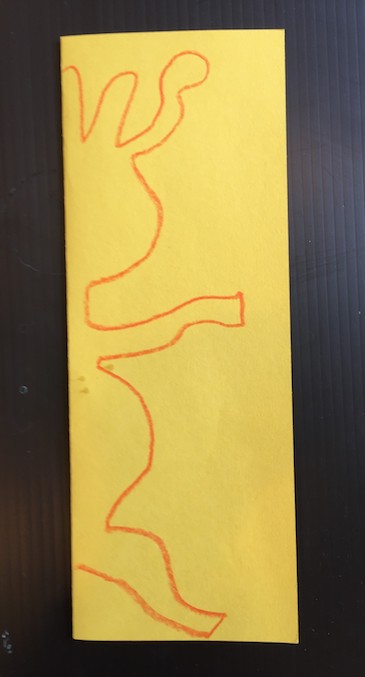
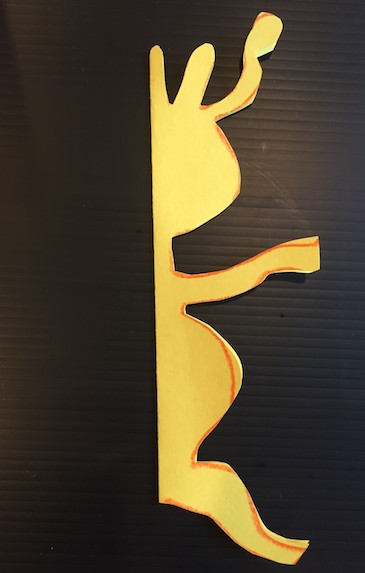
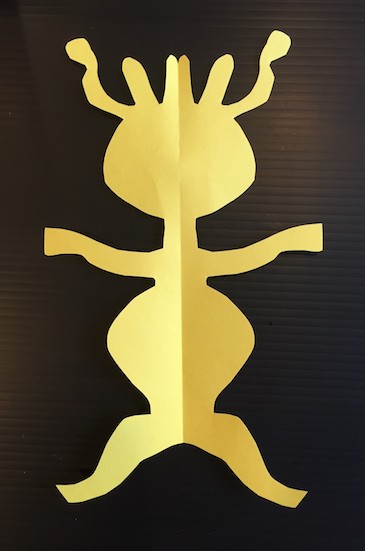
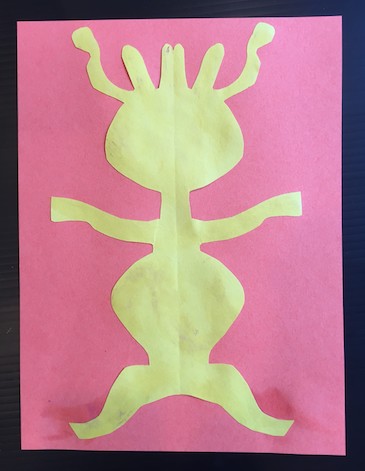
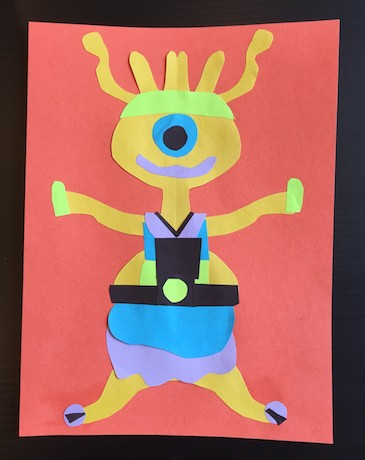
This lesson was inspired from the website Deep Space Sparkle, specifically the lesson “Home.”
21st Century Thinking Skills
Fact and Opinion – Distinguishing between fact (that which can be proved or disproved) and opinion (a belief or judgement).
Sequencing – Arranging things in an order.
Cause and effect – Recognizing actions and their reactions.
WA State Learning Standards
(VA:Cr1.1.2)Creating - Investigate, plan, make.Brainstorm collaboratively multiple approaches to an art or deign problem.
(VA:Cr1.2.2)Creating - Investigate, plan, make. Make art or design with various material and tools to explore personal interests, questions, and curiosity.
(VA:Cr2.1.2). Creating - Investigate. Organize and develop artistic ideas and work. Experiment with various materials and tools to explore personal interests in a work of art or design.
Arts Integration Opportunities
This lesson lends to a creative writing assignment.The students can describe their alien.They can describe the attributes of their alien, the place they live, their favorite color, food, activity, etc. This lesson can also connect to a science study on space.The students can research a real planet that their alien lives on.
Please note: These lesson plans are intended for non-profit use only. Use of these plans for commercial purposes should give attribution to the Issaquah Schools Foundation and be accompanied by a nominal donation at www.isfdn.org/donate. Thank you.
Fueling Success for Every Student, Every School